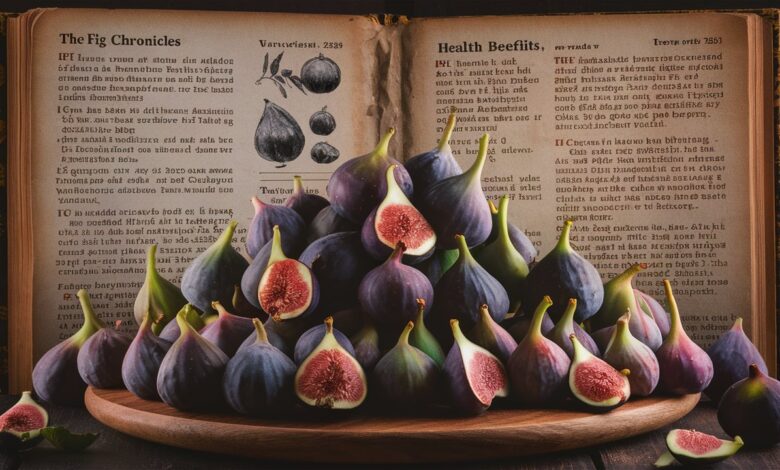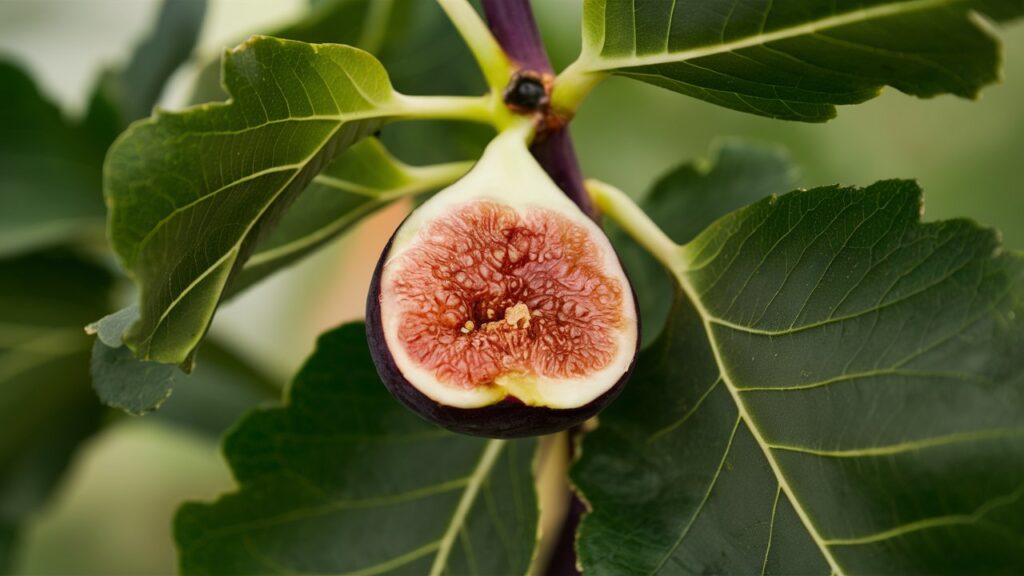
Introduction: The Timeless Allure of Figs
Figs, known scientifically as Ficus carica, have captivated humanity for millennia. These tear-shaped fruits, with their luscious interiors and delicate skins, are more than just a sweet treat—they are symbols of abundance, wisdom, and resilience. From ancient Mesopotamian tablets to modern gourmet kitchens, figs have woven themselves into the fabric of human culture, nutrition, and medicine. This article delves into the rich history, nutritional powerhouse, culinary versatility, and cultural significance of figs. Whether you’re a food enthusiast, a health-conscious individual, or a history buff, prepare to uncover the secrets of this extraordinary fruit.
1. The Historical Roots of Figs: From Ancient Civilizations to Modern Tables
Figs are among the oldest cultivated fruits, with archaeological evidence tracing their domestication back to 5,000 BCE in the Jordan Valley. Ancient Egyptians revered figs as a symbol of fertility, often burying them with pharaohs to sustain them in the afterlife. Greeks and Romans celebrated figs as a staple of their diets, with Plato himself reportedly advocating figs as the ideal food for athletes. The fruit’s journey continued through the Silk Road, spreading to Persia, India, and eventually the Americas via Spanish missionaries. Figs thrived in Mediterranean climates, becoming integral to regional cuisines and economies. This historical trajectory underscores the fig’s adaptability and enduring appeal, bridging ancient traditions with contemporary gastronomy.
2. Fig Varieties: A Global Palette of Flavors and Textures
Not all figs are created equal. Over 700 varieties exist, each offering unique flavors, colors, and uses. The Black Mission fig, with its deep purple skin and raspberry-like sweetness, dominates California orchards. The Kadota fig, a green-skinned variety, is prized for its mild flavor and is often canned or dried. Turkey’s Calimyrna fig, golden and nutty, shines in salads and cheese pairings, while the Adriatic fig, pale green and honeyed, is the star of Mediterranean jams. Lesser-known varieties like the Brown Turkey fig and Celeste fig thrive in humid climates, offering jammy textures perfect for baking. Understanding these varieties empowers chefs and home cooks to elevate dishes with the right fig for every recipe.
3. Nutritional Powerhouse: The Health Benefits of Figs
Figs are a nutritional treasure trove. A single serving (3–5 figs) provides a burst of dietary fiber, potassium, calcium, and antioxidants like polyphenols. Their high fiber content aids digestion, reducing bloating and promoting gut health. Potassium regulates blood pressure, while calcium supports bone density—a boon for vegans and lactose-intolerant individuals. Figs also contain prebiotics, which nourish beneficial gut bacteria, and compounds like ficin, an enzyme that aids protein digestion. Studies suggest figs may reduce inflammation, combat oxidative stress, and even lower cancer risk. Whether fresh, dried, or as a supplement, figs are a delicious way to boost overall wellness.
4. Culinary Alchemy: Transforming Figs into Gourmet Masterpieces
Figs’ versatility in the kitchen is unmatched. Their natural sweetness pairs effortlessly with savory and sweet ingredients. Slice fresh figs over goat cheese crostini, drizzle with honey, and sprinkle with thyme for an elegant appetizer. Roast figs with balsamic glaze and serve alongside duck or pork for a decadent entrée. In desserts, figs shine in tarts, clafoutis, or stuffed with mascarpone and pistachios. Dried figs add chewiness to granola, tagines, and chutneys. For a modern twist, blend figs into smoothies or infuse them into cocktails. Even fig leaves are edible, often used to wrap fish or steeped in teas for a coconut-like aroma. The possibilities are as limitless as your creativity.
5. Medicinal Marvels: Traditional and Modern Uses of Figs
Beyond nutrition, figs have long been used in traditional medicine. Ancient Ayurvedic texts prescribed figs for respiratory ailments, while Mediterranean cultures used fig sap to treat warts and skin infections. Modern research validates many of these uses: fig extracts show promise in managing diabetes by regulating blood sugar, and their laxative properties relieve chronic constipation. Fig leaf tea, rich in antioxidants, may improve insulin sensitivity. Additionally, fig-based poultices are used to soothe inflamed skin or insect bites. While not a replacement for medical treatment, figs offer a complementary approach to holistic health.
6. Growing Figs: Tips for Cultivating Your Own Fig Tree
Growing figs is a rewarding endeavor, even for novice gardeners. Figs thrive in USDA zones 7–11, requiring full sun, well-drained soil, and moderate watering. Popular varieties like Chicago Hardy and Desert King withstand colder climates. Plant trees in spring, ensuring 15–20 feet of space for root expansion. Prune annually to encourage fruit production and protect young trees from frost with burlap wraps. Container gardening is also feasible—opt for dwarf varieties like Little Miss Figgy. Harvest figs when they droop slightly and emit a sweet fragrance. With patience and care, your fig tree will yield bountiful harvests for decades.

7. Figs in Culture and Symbolism: Myths, Art, and Religion
Figs hold profound symbolic meaning across cultures. In Greek mythology, the fig tree was a gift from Demeter to humanity, while Buddha attained enlightenment under a Bodhi tree (Ficus religiosa). Judeo-Christian traditions depict fig leaves as Adam and Eve’s first clothing, symbolizing shame and redemption. In Islamic texts, figs are praised as one of the “fruits of paradise.” Artistically, figs appear in Renaissance paintings as emblems of wealth and in literature—from Dante’s Inferno to Sylvia Plath’s poetry—as metaphors for desire and transformation. This cultural tapestry cements the fig as a timeless icon of human aspiration.
Conclusion: Embracing the Fig’s Legacy in a Modern World
The fig’s journey from ancient orchards to modern plates is a testament to its enduring charm. Its sweet flesh nourishes our bodies, its history enriches our minds, and its symbolism inspires our spirits. Whether you’re savoring a fresh fig, planting a tree, or exploring its cultural legacy, this fruit invites us to connect with nature’s wisdom. In a world increasingly drawn to artificial solutions, the fig reminds us that some of life’s greatest treasures grow on trees.
Frequently Asked Questions (FAQs)
Q1: Are figs suitable for people with diabetes?
A: Figs have a moderate glycemic index and are high in fiber, which slows sugar absorption. However, portion control is key—opt for fresh figs over dried and consult a healthcare provider.
Q2: How should I store fresh figs?
A: Store fresh figs in the refrigerator for up to 5 days. Avoid stacking them, as they bruise easily. For longer storage, freeze or dry them.
Q3: Can I substitute fresh figs with dried figs in recipes?
A: Yes, but rehydrate dried figs in warm water first. Use a 1:3 ratio (1 dried fig = 3 fresh) due to concentrated sweetness.
Q4: Do figs have any side effects?
A: Overconsumption may cause digestive discomfort due to high fiber. Those with latex allergies may react to fig sap—proceed with caution.
Q5: What’s the best way to incorporate figs into a daily diet?
A: Add sliced figs to oatmeal, yogurt, or salads; blend into smoothies; or enjoy as a snack with nuts and cheese.
Q6: Are fig leaves edible?
A: Yes! Fig leaves can be grilled, steamed, or used to wrap meats. They’re also brewed into teas for a unique flavor.
Dive into the world of figs, and let this ancient fruit inspire your next culinary adventure or garden project! 🌿🍯



